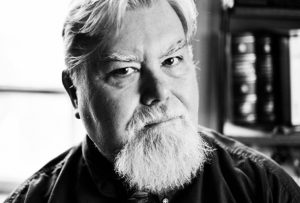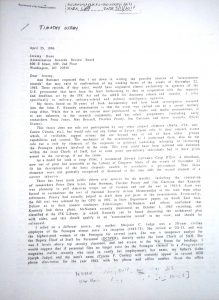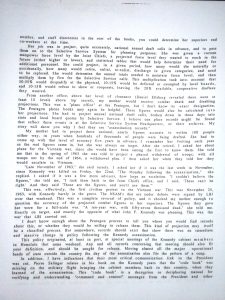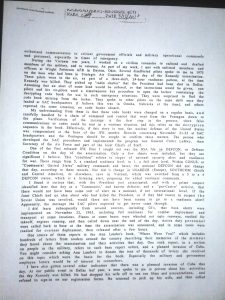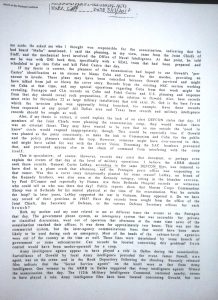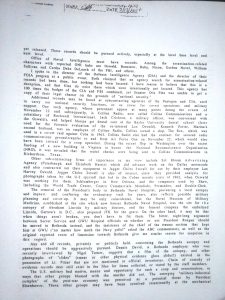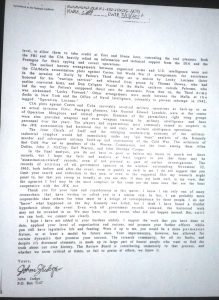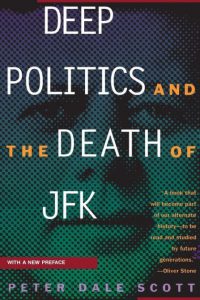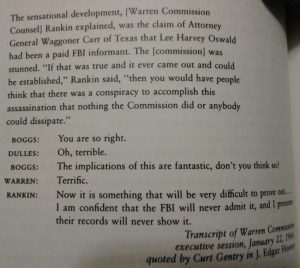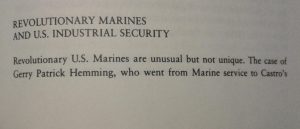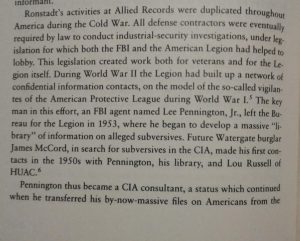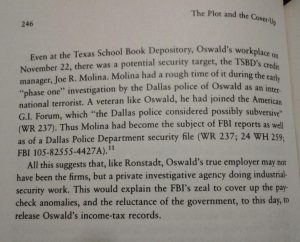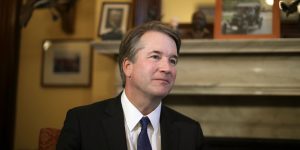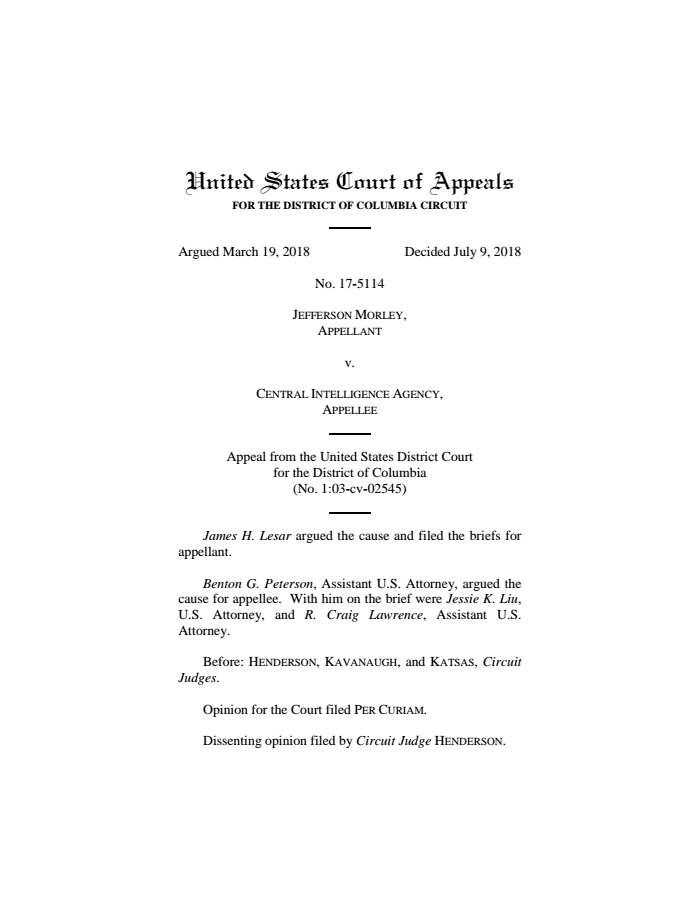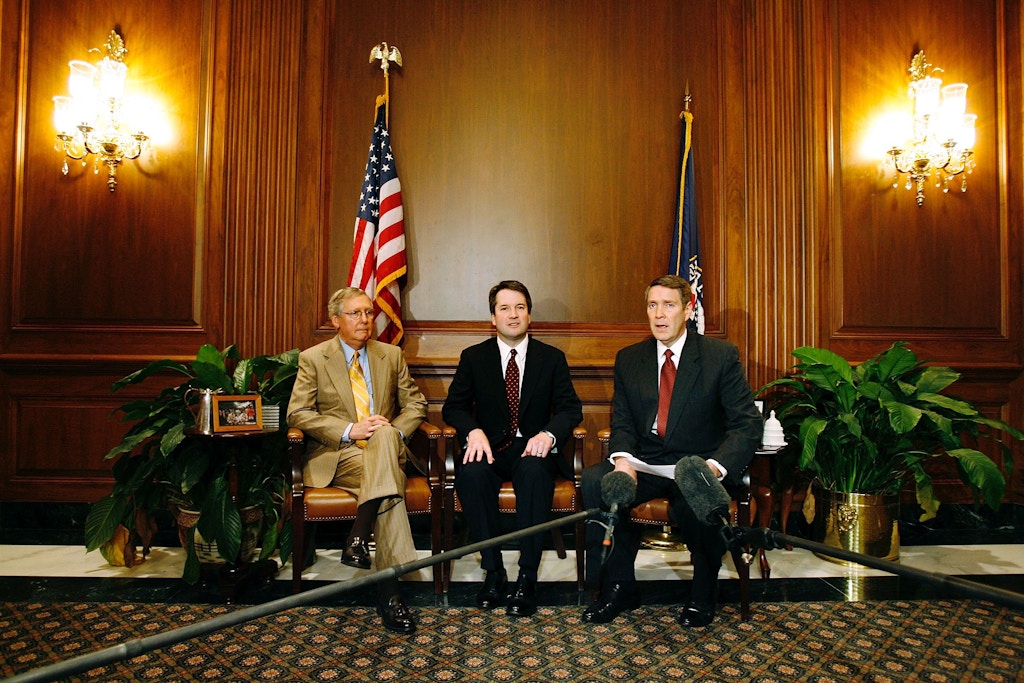Jefferson Morley | February 21, 2020

Tulsi Gabbard speaking in Fairfax, Virginia, February 17, 2020.
On February 17 in Fairfax Virginia, Donald Jeffries, an author and talk radio host, asked Democratic presidential candidate Tulsi Gabbard about a book she had been seen carrying, “JFK and the Unspeakable.” Published in 2009, the book is a Catholic philosopher’s meditation, driven by ethics and facts, about the assassination of a liberal president John F. Kennedy on November 22, 1963, one of the great historical crimes of American politics,
Gabbard replied she had not finished the book, adding “from what I have read,
Gabbard replied she had not finished the book, “but from what I have read, it uncovers a lot things that speak to what happened [on November 22] in a way that I haven’t seen anywhere else.”.
It was a cautious statement but custodians of the conventional wisdom pounced, nonetheless. Before Jeffries posted the video on Facebook, Olivia Nuzzi, Washington correspondent for New York Magazine tweeted about Gabbard’s comment. University of Virginia historian and pundit Larry Sabato responded dismissively.
It explains everything only if you possess a conspiratorial mind and choose to discount available evidence to the contrary.
This lazy tweet is not only unfair to Gabbard, it scants “JFK and the Unspeakable,” among the best books on JFK’s assassination published in the last twenty years. Author James Douglass not only recounts the latest research about the national security power struggles that wracked Kennedy’s administration up to the day of his death. Douglass also grapples with why we, as a society, have such a difficult time talking about the meaning of JFK’s murder. To confront JFK’s death, he concludes, is to confront an act of evil that we find unspeakable.
Sabato’s sniping overlooks the fact that Gabbard’s doubts are hardly unknown in the American political elite. If the former Hawaii Congresswoman has a “conspiratorial mind,” then so do former Democratic presidential nominees John Kerry and Al Gore, and maybe even Bill Clinton.
In 2013 Kerry said he thought Kennedy had been killed by a conspiracy, possibly emanating from Cuba, but declined to elaborate. At a joint campaign appearance in 1992, Clinton and Gore were asked if they thought JFK had been killed by a conspiracy. Oliver Stone’s “JFK” was a box office sensation at the time with its all-too-believable depiction of the assassination as a coup by the CIA and Pentagon. The ever-slippery Clinton deflected the question to Gore, who said yes, he thought there was a conspiracy. Clinton then agreed with Gore.
Once in office, Clinton changed his mind and said there was no conspiracy. He also appointed a civilian panel in 1994, the Assassination Records Review Board, that began declassifying millions of pages of long-secret JFK files, a process that is still not yet complete.
‘Felled by Domestic Opponents’
Now you could counter that candidates on the stump (or a retired Secretary of State) will say anything to please a crowd or attract attention. In 2016 Donald Trump smeared rival Ted Cruz with an unfounded claim that his father was involved in JFK”s assassination. But Trump’s mendacity should not obscure the record.

Numerous power players of the 1960s also had “conspiratorial minds.” JFK’s successor, Lyndon Johnson, his brother Robert Kennedy, and his widow Jackie Kennedy all privately spurned the Warren Commission’s conclusion that JFK had been killed by a man with no discernible motive. None actually shared Sabato’s blithe belief that the Warren Commission’s account of Kennedy’s assassination is irrefutable.
According to historians Tim Naftali and Aleksander Fursenko, Robert and Jackie Kennedy told their painter friend William Walton just a week after the ambush in Dallas that they suspected JFK had been “felled by domestic opponents.” As recounted in David Talbot’s “Brothers,” RFK discretely investigated the possible involvement of CIA-funded Cubans and organized crime bosses in his brother’s death for the rest of his life.
Jackie Kennedy, in a 1964 conversation with William Manchester, demurred on the Warren Commission’s controversial theory that a single bullet had wounded both her husband and Texas governor John Connally. (The so-called “single bullet theory” is the forensic keystone on which the lone assassin theory depends.) Biographer Barabara Leaming wrote, “That’s certainly not how Jackie remembered it.”
Publicly, Lyndon Johnson endorsed the Warren Commission’s lone gunman conclusion. Privately, he scoffed at it, first to a CBS camera crew and then to Leo Janos, a writer for the Atlantic.
Other senior U.S. officials had the same reaction. Winston Scott, the chief of the CIA’s Mexico City station, suspected a conspiracy and wrote as much in an unpublished memoir. Former cabinet Secretary Joseph Califano wrote in his memoir that he thought JFK was the victim of a Cuba-related plot. Col. Fletcher Prouty, chief of Pentagon Special Operations in 1963 and later an adviser to Oliver Stone, was sure there was a plot. “The reason for the assassination,” he wrote, “was to control the power of the presidency.”
‘Law of Silence’

Foreign leaders too, concluded there had been a conspiracy.
French president Charles DeGaulle, canny conservative and survivor of a right-wing assassination attempt in 1962, said Kennedy’s enemies had gotten away with the crime. He predicted a “law of silence” would quash those who disagreed.
Fidel Castro, canny communist and survivor of dozens of CIA assassination conspiracies, concluded Kennedy had been killed by reactionary foes at home. “There were people in the American government who thought Kennedy was a traitor because he didn’t invade Cuba when he had the chance, when they were asking him,” the Cuban leader told Atlantic editor Jeffrey Goldberg in 2013. “He was never forgiven for that.”
“So that’s what you think might have happened? Goldberg asked.
“No doubt about it,” Castro answered.
On the question of who killed JFK some of us find LBJ, RFK, Jackie, and Castro more credible than J. Edgar Hoover, Gerald Ford, Richard Helms, and Chris Matthews. Feel free to disagree but please don’t say we’re irrational.
Last of the JFK Files
Not only is Tulsi Gabbard in good company when she doubts the official JFK story, she is also talking about an issue that will confront the next president
In October 2017, President Trump broke a campaign promise to release all the JFK files. He quietly issued a White House order saying he had “no choice” but to permit the CIA and FBI to keep secret thousands of JFK documents until at least 2021. According to the latest figures from the National Archives, 15,834 JFK files remain wholly or partially classified. In other words, it would be a crime to disclose their contents or talk about these JFK files publicly in 2020.
And why, you might ask, are the government’s JFK assassination secrets still unspeakable in 2020? That’s a vexing question. Tulsi Gabbard offended conventional wisdom by seeking the answer.



